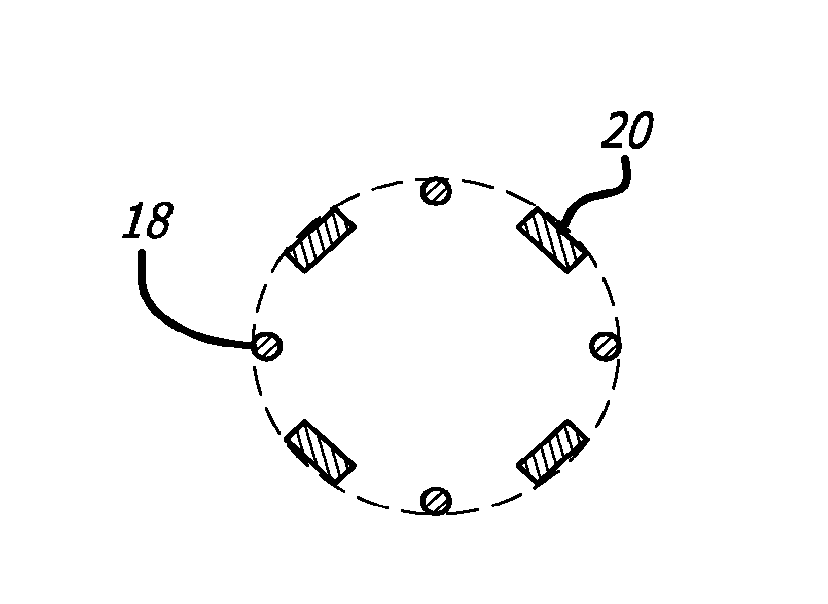Braided flow diverter using flat-round technology
a technology of braided flow and diverter, applied in the field of vascular implants, can solve the problems of not maximizing the amount of vessel area coverage provided by such braided flow diverting stents, and achieve the effects of reducing total wall thickness, increasing the area coverage of the vessel wall, and significant wall thickness
- Summary
- Abstract
- Description
- Claims
- Application Information
AI Technical Summary
Benefits of technology
Problems solved by technology
Method used
Image
Examples
first embodiment
[0017]Referring to the drawings, which are provided by way of example, and not by way of limitation, in a first embodiment, illustrated in FIG. 1, the present invention provides for a generally tubular braided flow diverting stent 10 for treatment of aneurysms, having a proximal end 12, a distal end 14, and an inner lumen (not shown). The generally tubular braided flow diverting stent is preferably formed from a plurality of elongate members, is typically formed from two or more metal wires, or polymeric fibers or strands of material, for example. In a presently preferred aspect, the tubular braided stent optionally may be a self-expanding stent, formed to have a compressed configuration and an expanded configuration. In another presently preferred aspect, the tubular braided stent optionally may be formed of a shape memory material such as a nickel-titanium alloy, for example, having a shape memory position in the expanded configuration. For example, the tubular braided stent may b...
second embodiment
[0023]In a second embodiment, illustrated in FIG. 2, in which like elements are indicated by like reference numbers, the present invention provides for a generally tubular braided flow diverting stent 30 for treatment of aneurysms. The tubular braided flow diverting stent has a proximal end 32, a distal end 34, and an inner lumen (not shown), and is preferably formed from a plurality of elongate members, typically formed from two or more metal wires, or polymeric fibers or strands of material, for example. In one presently preferred aspect, the tubular braided stent optionally may be a self-expanding stent, formed to have a compressed configuration and an expanded configuration. The tubular braided flow diverting stent can be formed of a shape memory material such as a nickel-titanium alloy, for example, having a shape memory position in the expanded configuration. For example, the tubular braided flow diverting stent may be appropriately heat treated so that the tubular braided flo...
PUM
 Login to View More
Login to View More Abstract
Description
Claims
Application Information
 Login to View More
Login to View More - R&D
- Intellectual Property
- Life Sciences
- Materials
- Tech Scout
- Unparalleled Data Quality
- Higher Quality Content
- 60% Fewer Hallucinations
Browse by: Latest US Patents, China's latest patents, Technical Efficacy Thesaurus, Application Domain, Technology Topic, Popular Technical Reports.
© 2025 PatSnap. All rights reserved.Legal|Privacy policy|Modern Slavery Act Transparency Statement|Sitemap|About US| Contact US: help@patsnap.com


